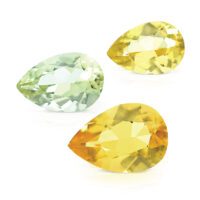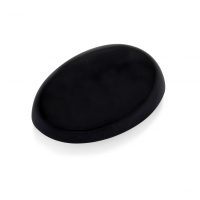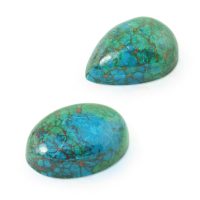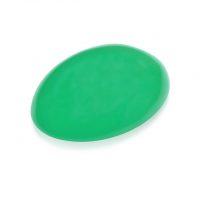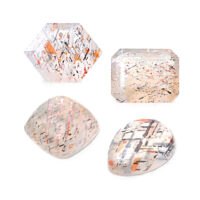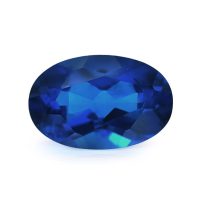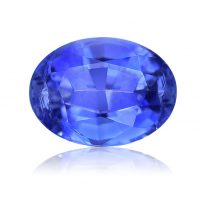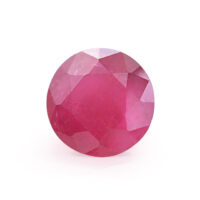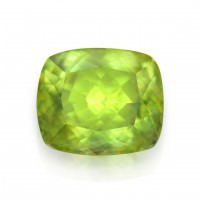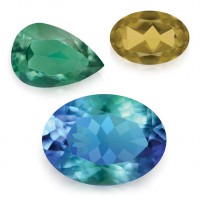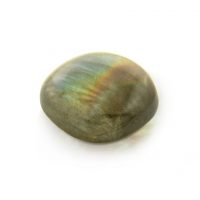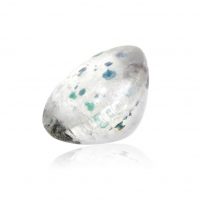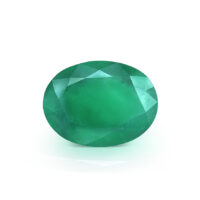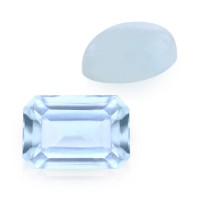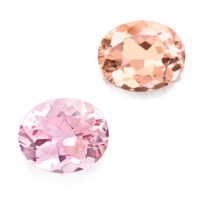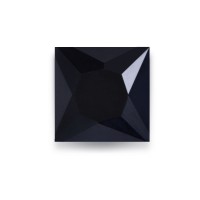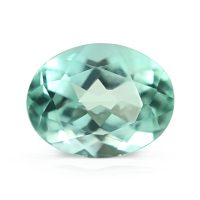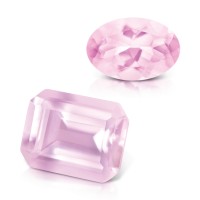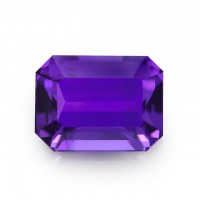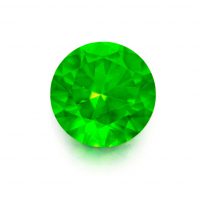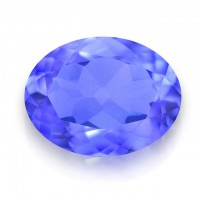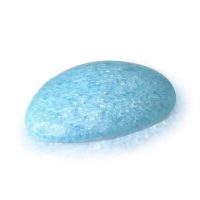

Paraíba Tourmaline are very rare, uniquely beautiful, vivid blue gemstones from Brazil and Mozambique. Wonderfully wearable with a neon appearance and fine brilliance, Paraíba Tourmaline is the rarest and most valuable Tourmaline.
Hardness 7 - 7.5
Refractive Index 1.618 - 1.646
Relative Density 2.82 - 3.32
Enhancement Heat
Beauty
Named for its initial discovery, Paraíba Tourmaline was only unearthed 28 years ago, but in a relatively short time has not only redefined the perception and appeal of Tourmaline, but also gemological beauty itself. In his book, Gemstones: Quality and Value, Volume 1, Yasukazu Suwa describes this phenomenon stating, “The appeal of Paraíba Tourmaline far exceeds that of other gems, to the point where they are desired even by people who are accustomed to seeing a variety of gemstones”.
Paraíba Tourmaline’s main value determinants are vivid colors, characterized by an electric, fluorescent or neon appearance, a distinctive transparency that affords fine brilliance, and cutting quality. Described as Caribbean blue, peacock, copper-green, neon-aquamarine, swimming pool blue or Turquoise blue, the colors range from bluish-green, blue-green, greenish-blue, blue and bluish-violet. While its vivid blues are the most popular and expensive, all its colors are unique, with gems displaying a greater neon intensity increasing in value. The late Masashi Furuya, former director of the Japan Germany Gemological Laboratory, aptly described Paraíba Tourmaline as “electric blue brilliance burnt into our minds”.
Dependent on expert cutting, Paraíba Tourmaline is always challenging for the lapidary due to areas of internal tension inside Tourmaline crystals and its inherent pleochroism (colors and their intensity change when viewed from different angles). Every Paraíba Tourmaline has been faceted by experienced lapidaries who carefully orientate each crystal to maximize the gem’s colorful brilliance. Like Emerald, Paraíba Tourmaline often has visible inclusions and this is tolerable as long as it doesn’t nullify beauty.
Traditionally a ‘day stone’, Paraíba Tourmaline also looks good in low light conditions due to its neon appearance and fine brilliance.
Tourmaline frequently garners the nickname, ‘the chameleon gem’, not only because of its multitude of colors, but also because of its historic propensity to be confused with other gemstones. Tourmaline is derived from the Sinhalese ‘turmali’, which means ‘mixed parcel’ or ‘stone with mixed colors’ and are a group of related minerals whose differences in composition result in a huge variety of colors. While there are 13 mineralogical varieties of Tourmaline, Elbaite is the mainstay of Tourmaline gemstones. Elbaite is named after the island of its discovery (Elba) in Tuscany, Italy; Elba is best known as the island of Napoleon’s exile in 1814. Tourmaline’s different colors are either identified by a color prefix, such as blue-green, green and pink, or a variety name or prefix. These include Bi Color Tourmaline (two or more colors), Canary Tourmaline (intense yellow from the African nations of Malawi and Zambia), Cat’s Eye Tourmaline (chatoyant Tourmaline), Color Change Tourmaline (green to red), Cuprian Tourmaline (non-Paraíba hues including purples, but still colored by copper and manganese), Indicolite (blue), Paraíba Tourmaline (blue to green, colored by copper and manganese), Rubellite (red), and Watermelon Tourmaline (pink interior, green exterior, just like the fruit). Another prized, but exceedingly rare variety is Chrome Tourmaline, a vivid pure green East African Dravite colored by chromium and vanadium, the same elements that color Emerald and Tsavorite. Last is Black Tourmaline (Schorl), a variety once popular in mourning jewelry that is enjoying a revival due to the popularity of Black Diamonds.
Rarity
Paraíba Tourmaline is the rarest and most valuable Tourmaline variety. Tourmaline’s array of colors is typically due to trace amounts of chromium, iron, manganese and vanadium, but with Paraíba Tourmaline it is copper and manganese, an unusual combination for Tourmaline, that not only makes it beautiful, but also geologically scarce.
Paraíba Tourmaline was discovered in 1987 near the village of São José da Batalha in Paraíba, Brazil by Heitor Dimas Barbosa, a ‘garimpeiro’ (small-scale miner) who been infatuated by the gem since the early 80s. While the original Batalha Mine in Paraíba was ostensibly exhausted several years after its discovery, new but limited Brazilian deposits were later discovered in the neighboring state of Rio Grande do Norte in 1991 (Mulunga Mine) and 1995 (Quintos Mine), and again in Paraíba in 2006 (Glorious Mine). The newer African discoveries, first in Nigeria (Edoukou and Ofiki circa 2000) and then in Mozambique (Mavuco 2001, although the gems didn’t appear in the marketplace until 2005), have helped fulfill the demand for this popular jewelry gemstone.
After the success initially enjoyed by artisanal miners, there are reportedly three companies operating mechanized/semi-mechanized mines in the Mavuco area. Despite their investments and a hope that further exploration of the surrounding area would find this alluvial deposit’s primary source, production has been limited and sporadic.
In 2006, the Laboratory Manual Harmonization Committee (LMHC) decided that because they are indistinguishable using standard gemological tests, blue (electric blue, neon blue or violet blue), bluish-green to greenish-blue or green copper-rich Cuprian Elbaite Tourmaline with a medium to high saturation and tone of any origin can be called ‘Paraíba’.
Durability & Care
Paraíba Tourmaline is a durable gemstone (Mohs’ Hardness: 7 – 7.5) well-suited to everyday wear. Always store Paraíba Tourmaline carefully to avoid scuffs and scratches. Clean with gentle soap and lukewarm water, scrubbing behind the gem with a very soft toothbrush as necessary. After cleaning, pat dry with a soft towel or chamois cloth.
Map Location


Click maps to enlarge






